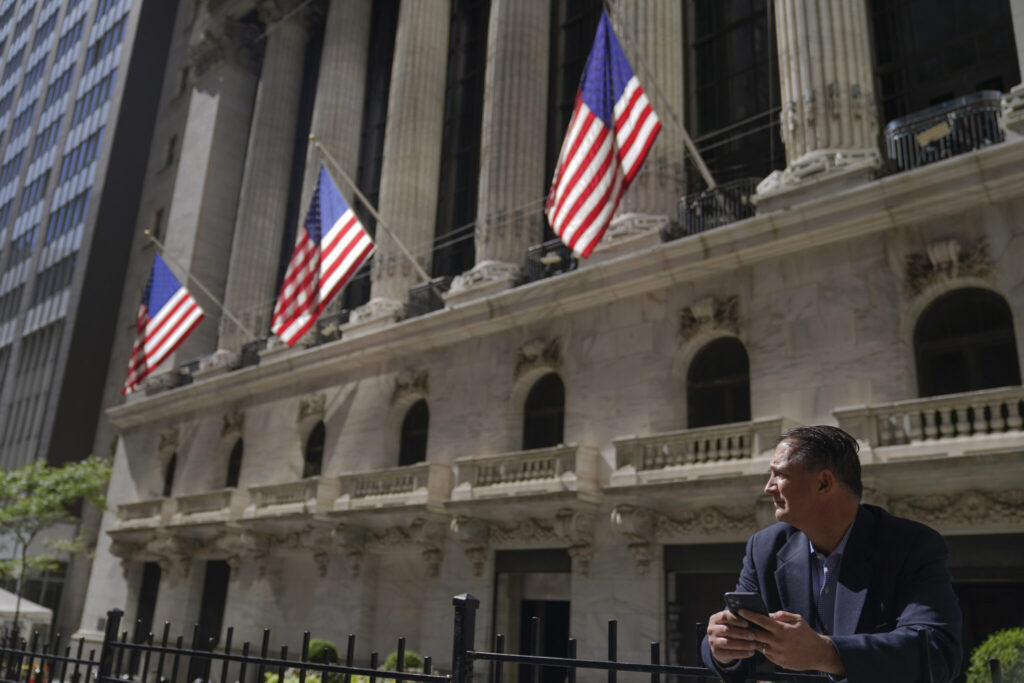The second week of August looks set to begin on a slightly brighter note than the first, with U.S. futures signaling a higher open after Wall Street posted its biggest weekly drop since March’s banking turmoil as back-end yields jumped. Reverberations from the prior week’s policy tweak from the Bank of Japan, a U.S. debt downgrade and an announcement by the Treasury that bond issuance was set to surge in the third quarter all sent longer-end bond yields to multi-month highs last week, in turn weighing on equity markets. The Associated Press has the story:
Wall Street stocks set for rebound to regain some momentum
Newslooks- NEW YORK (AP)
Stocks are rising Monday as Wall Street regains some momentum following a pause in its big rally for the year so far.
The S&P 500 was 0.6% higher in early trading, coming off its first losing week in the last four. The Dow Jones Industrial Average was up 258 points, or 0.7%, at 35,324, as of 9:40 a.m. Eastern time, and the Nasdaq composite was 0.3% higher.
Berkshire Hathaway rose 2.4% after the company run by famed investor Warren Buffett reported stronger profit and revenue for the spring than analysts expected. Pharmaceutical company Viatris also rose after its results topped forecasts It climbed 4.2%.
The stronger-than-expected reports helped offset a 9.3% drop for Tyson. The company’s results for the latest quarter fell far short of analysts’ expectations, and Tyson said it would close four chicken facilities as it tries to cut costs.
Corporate profits have been mostly beating forecasts as the season for reporting results from April through June enters its tail end. Nearly four out of five companies in the S&P 500 have topped expectations so far, according to FactSet. But they’re still on track to report their sharpest drop in profit from year-earlier levels since the summer of 2020, when the pandemic was pummeling the global economy.
Besides profit reports from some media giants like The Walt Disney Co. and Fox, this upcoming week also features highly anticipated reports on inflation.
Inflation has been the key to Wall Street’s big moves in recent years after soaring to its worst level in generation. Since hitting a peak last summer, inflation has been cooling steadily. That has raised hopes that the Federal Reserve may be done with its drastic hikes to interest rates.
Higher rates try to smother inflation by bluntly slowing the entire economy and hurting prices for investments. The Fed has quickly pulled its federal funds rate to the highest level in more than two decades, up from virtually zero early last year.
Inflation has come down from more than 9% last summer to 3% in June. But many economists and professional investors say the toughest part may still be ahead as the Fed tries to get inflation down toward its 2% target.
Oil prices have perked up recently, for example. The price of a barrel of U.S. crude added roughly $10 through July to top $80, though it slipped 0.7% to $82.26 Monday.
A remarkably resilient job market may also be putting a floor under inflation by giving households fuel to keep spending and keep inflationary forces alive. A report last week showed that wages for workers rose more in July than expected, though hiring was cooler than forecast.
On Thursday, the U.S. government will release the latest monthly update on inflation that consumers are feeling, and economists are forecasting it will show a 3.3% rise in prices from year-ago levels. That would be an acceleration from June’s inflation rate.
The Fed pays particularly close attention to what prices are doing for services outside of rent and housing. Much of the improvement in that area during June came from falling airfares. Now that they’re back to where they were before the pandemic, they may not move much more now, economists at Deutsche Bank say.
In stock markets abroad, indexes were mixed across Europe and Asia.
In the bond market, yields were ticking higher after jumping last week and putting pressure on the stock market. The yield on the 10-year Treasury rose to 4.07% from 4.04% late Friday. It helps set rates for mortgages and other important loans.
The two-year Treasury yield, which moves more on expectations for the Fed, rose to 4.78% from 4.76%.







